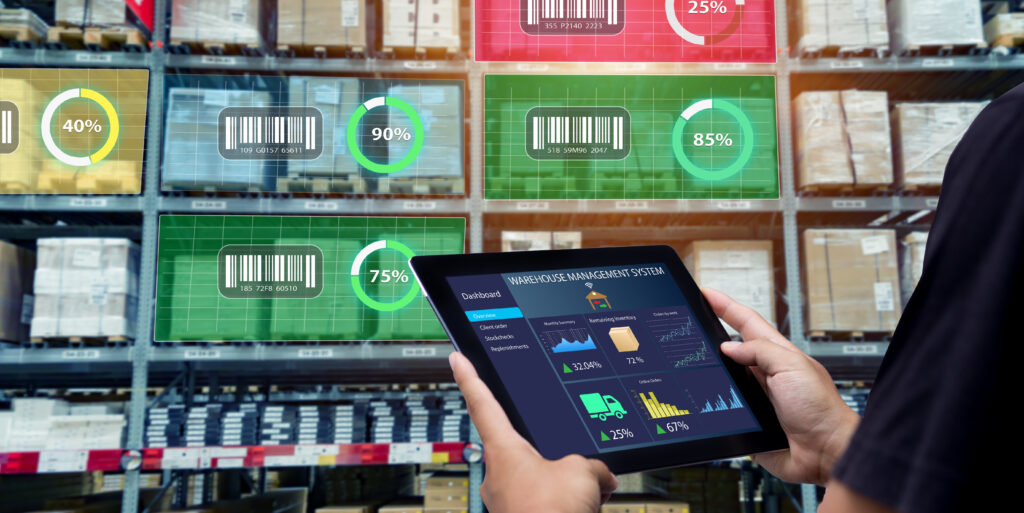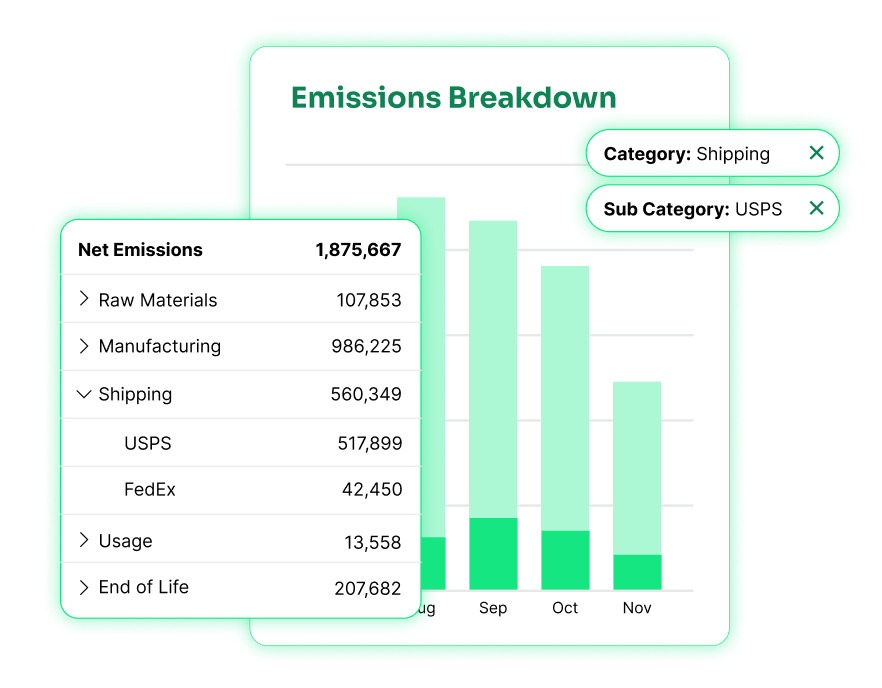Whether you’re seeking green business certifications or simply want to prove your company’s sustainability standing, a sustainability report is the way to go. When guided by trusted and established sustainability reporting frameworks, this type of report paints an accurate and transparent picture of your company’s environmental, sustainable, and governance (ESG) practices while highlighting opportunities for improvement.
So, what is sustainability reporting, and how can your sustainable ecommerce company produce such a report? Here’s our guide.
What Is Sustainability Reporting?
Sustainability reporting (aka ESG reporting) is the external-facing report on a company’s environmental, social, and governance (ESG) practices and sustainability strategies. It’s a communication tool to inform relevant stakeholders about a company’s sustainability initiatives, including its outcomes, challenges, and achievements.
This public report outlines what’s found in a sustainability audit so that a company can transparently convey the current state of its sustainability, progress toward its targets, and create goals for sustainable development.
To complete a sustainability report, a business will need a framework to work with and standards to guide its sustainability goals. While the framework will provide a foundation and guide the overall principles of the report, the standard will provide detailed requirements for specific issues within a sector. Typically, your chosen sustainability framework will include different standards depending on the larger goals of your company’s sustainability reporting.
What Is The Purpose Of Sustainability Reporting?
The main purpose of sustainability reporting is to transparently communicate your company’s sustainability to relevant stakeholders, including potential investors, customers, and employees.
Beyond this, there are many practical reasons for sustainability reporting. It proves you are progressing in your sustainable development, helping your company avoid greenwashing claims. It displays compliance with ESG legislation and will highlight any problem areas so that you can address them before facing fines or losing investors.
Finally, a report is often required to apply for green business certifications. These may include B-Corp Certifications, Green Business Bureau, ESG Certification and ISO 14001. Before you get a sustainability report for a green business certification, ensure it complies with certification requirements, as they may differ.

What Is In A Sustainability Report?
Depending on your sector and the framework and standard you use, sustainability reporting covers the entire Environmental, Social, and Governance field, going beyond environmental impact to include business ethics, regulatory compliance, community impact, and employee wellbeing.
A sustainability report will often include:
- sustainability strategy and its governance
- stakeholder engagement
- environmental performance
- social performance
- ethics
- case studies
- challenges and opportunities,
- future outlook
- verifications
- and more
What is specifically covered in your report will depend upon your chosen framework and standard. Some frameworks and standards will report on broad aspects of your company’s sustainability, while others will focus on one area, e.g., carbon emissions.
Choosing sustainability reporting frameworks
When choosing your sustainability framework, you need to consider your larger goals and audience for your sustainability report. Are you trying to earn a green business certification? Do you wish to prove your sustainable business practices to stakeholders? Are you attempting to gain a better understanding of where you stand in terms of your sustainability KPIs? What you want from your report will guide your chosen framework.
Here are some top reporting frameworks and when they might be used.
- Global Reporting Initiative (GRI): This provides a globally accepted, comprehensive framework that includes standards for various industries. While it requires significant resources, it’s one of the most trusted sustainability reporting entities.
- Sustainability Accounting Standards Board (SASB): This offers sector-specific standards focusing on material sustainability issues. It’s a good choice for U.S.-based companies that want to showcase their financial condition concerning their sustainability initiatives, especially to investors.
- Task Force on Climate-related Financial Disclosures (TCFD): This focuses on climate-related financial risks and opportunities. It’s ideal for companies primarily concerned with their climate-related impact.
- Carbon Disclosure Project (CDP): This focuses on carbon-related metrics. While it will accurately depict your carbon footprint, you may need multiple standards to understand your full environmental impact.
Ultimately, the framework that you choose will be determined by your audience and what they are looking for. For example, if your report is meant for potential investors, you’ll likely choose the SASB framework or similar. However, if you’re using your sustainability report to gain a green certification, they will likely ask for a more comprehensive standard, like the GRI.
Choosing sustainability reporting standards
Once you’ve chosen your framework as your overall guide, you’ll opt for a standard that analyzes specific areas of your company’s ESG within that framework. For example, if you’ve chosen GRI as your sustainability framework, they provide many different sector-specific standards under which your report will take place. These include sector standards for gas and oil, sector standards for textiles and fashion, and so on.

Types Of Sustainability Reporting
There are many types of sustainability reports depending on the report’s goal and audience. You can focus on individual areas of your ESG—your environmental impact, your social impact, or your company’s governance. You may choose to have a more comprehensive report analyzing all three areas of your ESG with sector-specific standards. Or, you might want to report on your financial condition with regard to your sustainability.
Here are some common types of sustainability reporting to give you an idea of what your company might pursue.
- Comprehensive sustainability report: As the most detailed and complete report, this covers all areas of your company’s performance, including a full scope of your environmental impact, social impact, internal operations, and more.
- Stand-alone report: A stand-alone report will cover your environmental impact, OR your social impact, OR your governance. These are useful when stakeholders are interested in a specific area of your ESG.
- Corporate Social Responsibility (CSR) report: This highlights your company’s community and social initiatives and includes things like business ethics, employee well-being, and charitable donations.
- GHG emissions report: As the name implies, this will focus on your carbon footprint. This is useful for companies seeking net zero goals to report their status to stakeholders and ascertain where they are in terms of their carbon emissions targets. To see how businesses can keep track of their carbon emissions, learn more about carbon accounting.
- Sector-specific report: These types of reports will adhere to sector-specific standards that analyze your company’s ESG against your industry’s unique challenges and opportunities.
- Supply chain report: This report will analyze the ESG of your supply chain. This is especially useful for those trying to reduce Scope 3 emissions or otherwise improve the impact of their company from external sources. Learn how to conduct a supply chain audit.
Read more: Sustainability vs CSR vs ESG
How To Conduct A Sustainability Report
Conducting a comprehensive sustainability report won’t pose an easy task. Even under the guidance of an established sustainability reporting framework, you will need to allot plenty of resources to gather necessary data, assess your company’s sustainability performance, write the report, and make improvements. Although these steps may vary depending on your chosen framework and standards, here are some basic steps to complete a report.
- Plan and prepare. During this step, you will need to set the objectives of your sustainability report, identify key stakeholders, and choose a framework.
- Conduct a materiality assessment. This will help you identify areas of your sustainability that are relevant to your business. During this step, you should also set the scope of your sustainability reporting. Read more about conducting a life cycle analysis.
- Collect and analyze data. You can use sustainability management software to automate data collection. This will include metrics and practices associated with your Environmental, Social, and Governance (ESG). You must also analyze your sustainability KPI performance.
- Write the report. This will be written according to the standards set forth by your chosen framework. Be sure to provide context and include case studies.
- Review and validate. Have key internal stakeholders review the report to ensure transparency, accuracy, and completeness. You should also consider having it validated by a verified third party.
- Distribute to the appropriate channels. Once your sustainability report is complete, you can publicly publish it, send it to investors, or include it in your green business certification applications. The original goals of the report should guide your distribution.
- Set goals for improvement. While the primary purpose of a sustainability report is to communicate your company’s performance to stakeholders, it should also be used to highlight opportunities for improvement within your sustainability program. Set new targets based on the report’s results and implement strategies to improve future sustainability reports.
Want to know where your business stands? Get your sustainability scorecard with our quiz:
How To Implement A Sustainability Program
Having a sustainability program is an essential part of modern business. But developing an effective program isn’t a simple task. Your sustainability report can help guide program development or highlight areas that can be improved. Once you know your most significant areas of impact, this can drive your sustainability program goals.
A sustainability plan must include measurable sustainability goals, engage stakeholders (such as your employees), and include your supply chains. Make sure that your sustainability program goes beyond the environment. Contemporary consumers demand both environmental and social responsibility, so don’t forget to include things like diversity, fair trade practices, community impact, and similar in your sustainability initiatives.
Conclusion
The implementation of effective ESG strategies is not intuitive. Sustainability standards are notoriously challenging to achieve, especially as your ecommerce business grows. We’re here to provide some assistance.
With offerings like our carbon dashboard and ecommerce sustainability scorecard, we have plenty of tools to help you reach your carbon emission goals. From sustainable shipping practices through carbon-neutral shipping to resources to help you tell your sustainability story, EcoCart supports you in making sustainable solutions that help minimize your company’s carbon footprint. Reach out to our team for a demo today.



